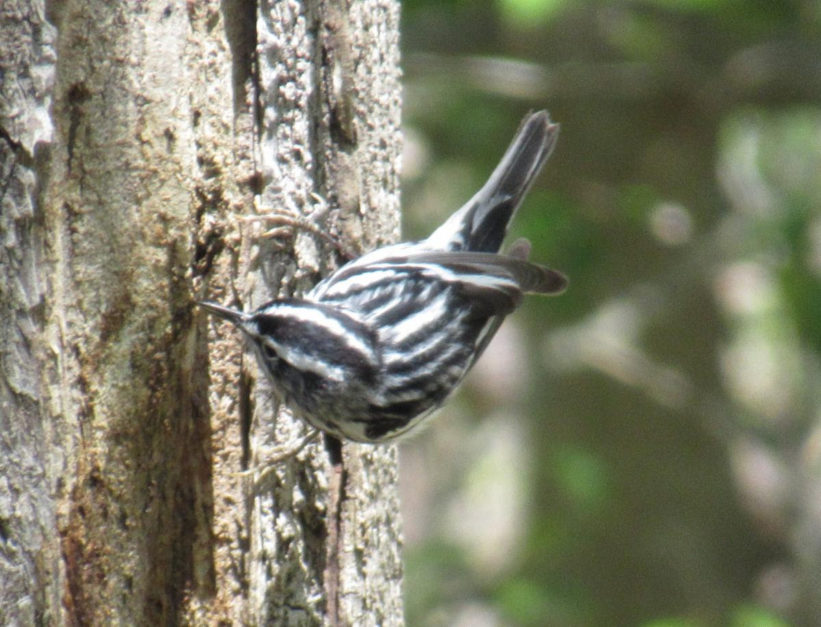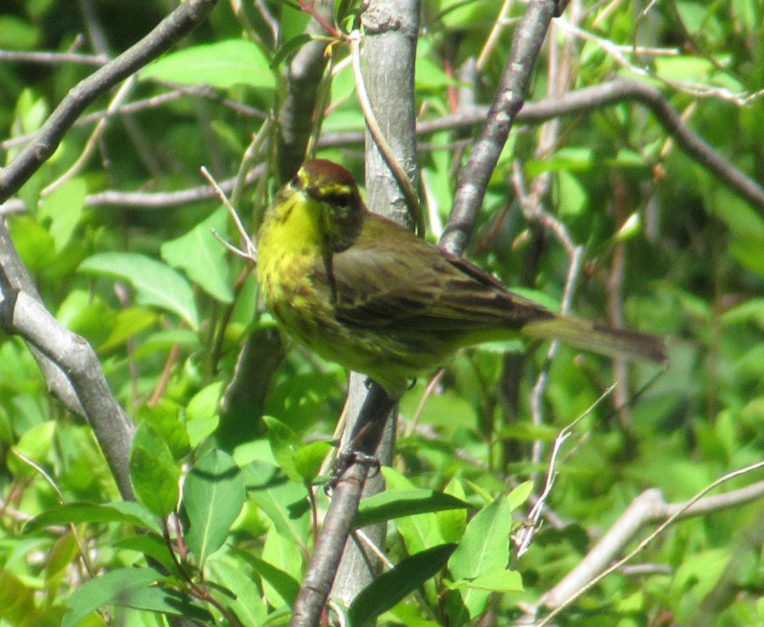
“““““““““““““““““
Bird’s View from Winds Way
The First of May
~~~~~~~~~~~~~
a monthly column written by Nancy Gilbert
with photos by Richard Wines
————–

““““““““““““““
Growing up in Neenah, Wisconsin, May Day was a highlight of lengthening days with their promise of warmer weather and summer to follow. For us it meant picking what we called May flowers (most likely violets, spring beauty, and hepatica) from the nearby park, placing them in handmade paper baskets (without water), hanging them on the front doorknobs of family and friends, ringing the doorbell and bolting away before the door was opened. Even though that tradition is one of the past, my husband and I try to honor the return of spring by eating as many lunches outdoors as possible. This year was no exception.
““““““““““““““
May 1st of 2021 fell on a Saturday. Do you remember how windy it was? A beautiful sunny day with glorious blue sky but as on Friday, the wind was gusting up to 50 mph out of the north. Lunch needed to be in a spot sheltered from the wind and warmed by the sun. We chose the steps of the small back porch facing south and separated from Peconic Bay by our scrubby woodland. When outside during spring migration we always have binoculars with us, and on May 1st this proved fortuitous. All of a sudden there were at least a dozen warblers madly chasing insects in the understory right in front of our noses. We were stunned! One of the best parts was that warblers usually flit around in the tops of trees, making it difficult to identify them without suffering from the birders’ complaint of “warbler neck”. They were so close and so busy feeding that Richard was able to capture them with his point-and-shoot camera.
““““““““““““““
But before I tell you about who visited our woods that day, a word or two about “migration fallout”. This happens in both spring and fall when birds literally fall out of the sky while migrating because of adverse weather conditions or lack of physical strength. It is a phenomenon welcomed by birders because it is possible to see many species of birds all at once, and in the spring, their colors are on full display. But it must be remembered that a fallout is not a happy event for the birds. This time of year they are headed north to their breeding grounds in order to perpetuate their species. Migrating is an arduous undertaking at best, and high winds, low visibility, fog, heavy rain and storms can make it life-threatening. Descriptions of major fallouts talk about dozens of exhausted birds sitting on the ground wherever they land. When this occurs, there are things you can do to help – keep your distance, provide food and water, do not play recorded bird songs. Hopefully, the birds will recover sufficiently and complete their journey.
““““““““““““““
Back to our woods. What we experienced was perhaps a mini fallout. Thankfully, the birds remained strong and active. The winds calmed down later that day, and by the next day, there was not a warbler to be spotted. Sustained north winds can keep birds grounded for days waiting for a favorable tailwind. We were delighted they were able to continue northwards and that our woods provided sustenance to the four species of warblers who visited – Black and White Warblers, Palm Warblers, Prairie Warblers, and Yellow-rumped Warblers. Now we can talk about the birds!
““““““““““““““

““““““““““““““
Black and White Warblers are small and elegant with a thin and slightly curved black bill. Their black and white stripes make them look as if they dressed for a formal occasion. The picture above is of a male. Note the black ear patch. The female is quite similar but somewhat paler and with a grayish ear patch. These warblers are easier to spot than many because they forage on trunks and main branches of trees, much like a nuthatch, looking for insects. They spend the winter months in forests and on forest edges from Florida to Central America, the West Indies, and down to Peru. This warbler is not considered endangered due to its extensive range and large population size. However, habitat loss and degradation are a concern as this bird nests on the ground at the base of trees throughout northern and eastern North America. The Black and White is one of the first warblers to arrive at its breeding grounds so we are hoping that at least some of those who joined us for May Day lunch may remain behind and raise a family.
““““““““““““““

““““““““““““““
The Palm Warbler is largish for a warbler, with a longer tail and longer legs than most warblers. It also has an upright posture that is quite distinctive and is usually seen down low or walking on the ground. The most telling behavioral indicator, however, is constant tail-wagging. The sexes are similar in appearance and both sport a bright rusty cap. The Palm Warbler, whose numbers are apparently stable, spends winter in the southeastern United States. We know the ones we saw were headed to the boreal forest in the far north, where they will build nests on the ground, often in peat moss. Our next opportunity to see them won’t be until the fall migration.
““““““““““““““

““““““““““““““
Contrary to its name, the Prairie Warbler is a bird of shrubby fields and open woods. Luckily for us, they breed throughout the eastern United States so we may get a glimpse of another during the summer before they head south to winter in Florida or the Caribbean. Unfortunately, Prairie Warbler nests are often parasitized by Brown-headed Cowbirds. Although the Cowbird is a native, it is considered a nuisance by many. Not only will Cowbirds destroy the eggs and nestlings of songbirds but the females never build a nest of their own. They lay their eggs in the nests of other birds, who brood the eggs and raise the babies as if they were their own. Sadly, the Prairie Warbler is declining in most of its range due to loss of breeding habitat through development and the natural evolution of shrubby habitat into forest. These are beautiful small warblers, and while the photo is slightly blurry, note the bright yellow underparts, black streaking on flanks, black eyeline, distinctive black semicircle under the eye and barely visible chestnut colored back patch. This is a male. He, like the Palm Warbler, also does a lot of tail wagging.
““““““““““““““
Last but definitely not least are the Yellow-rumped Warblers (photo at top), affectionately known as Butter Butts because of the yellow spot at the top of their tales even in non-breeding plumage. Most frequently seen in sizeable groups in the winter, the spring molt brings about a dazzling transformation making their feathers a mix of yellow, charcoal gray, black and white. As you will notice, the female shown has duller coloration. Yellow-rumps are the only warbler able to digest the waxes in bayberries and wax myrtles. Their switch to eating berries in the fall allows them to winter as far north as New England but they will travel as far south as the Caribbean. Most of these warblers will breed in Canada’s boreal forest by constructing a nest on the horizontal branch of a conifer. They are a cheery little bird whose presence we can usually count on for the Christmas Bird Count here on the North Fork.
““““““““““““““
Since May Day I’ve been lucky enough to see a Scarlet Tanager, Baltimore Oriole, Northern Parula Warbler, Black-throated Blue Warbler, Common Yellow-throated Warbler and a Yellow Warbler right outside the door. It is such a wonderful time to become acquainted with our feathered friends! I hope the Warblers will visit you too.
~~~~~~~~~~~~~~~~
A Bird’s View from Winds Way is a monthly column by one of our board members and avid birder, Nancy Gilbert — with photos from her husband Richard Wines — on our local birds. Nancy’s columns appear on our blog, so please tune in each month for more from Winds Way.— from Peconic Land Trust’s Latest Conservation & Stewardship News / May, 2021
~~~~~~~~~~~~~~~~~~~~~~~~~~

Visit: www.peconiclandtrust.org
—————–
==============================================

““““““““““““““
AAQ / Resource: Westhampton Architectural Glass
__________________________________________
